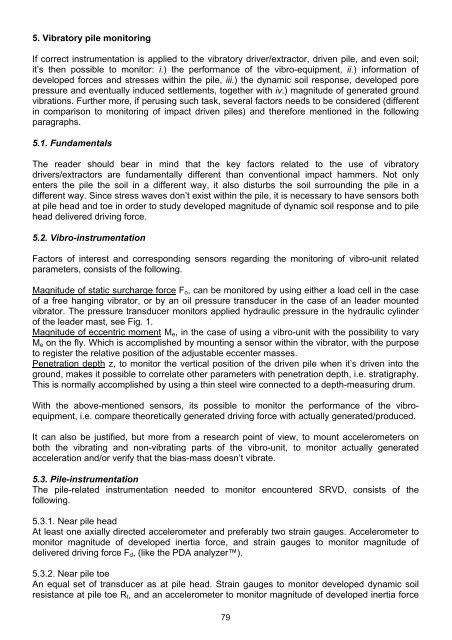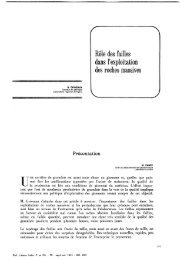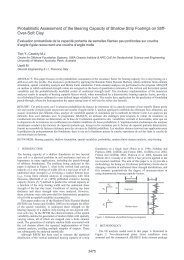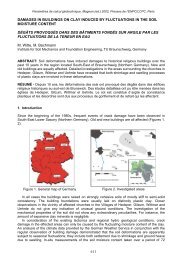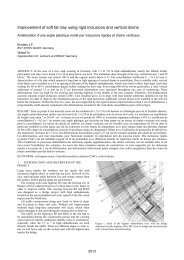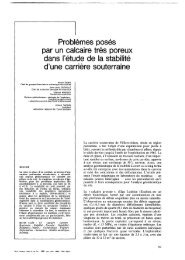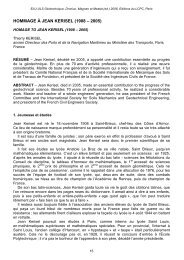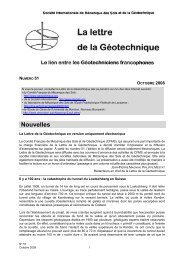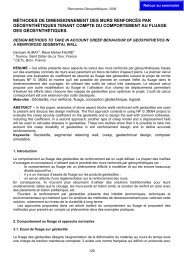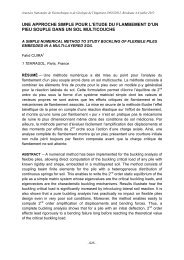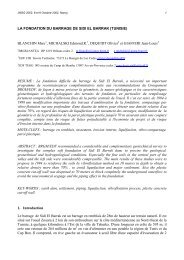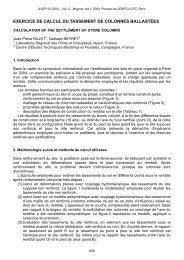THE VIBRATORY PILE INSTALLATION TECHNIQUE - Viking
THE VIBRATORY PILE INSTALLATION TECHNIQUE - Viking
THE VIBRATORY PILE INSTALLATION TECHNIQUE - Viking
You also want an ePaper? Increase the reach of your titles
YUMPU automatically turns print PDFs into web optimized ePapers that Google loves.
5. Vibratory pile monitoringIf correct instrumentation is applied to the vibratory driver/extractor, driven pile, and even soil;it’s then possible to monitor: i.) the performance of the vibro-equipment, ii.) information ofdeveloped forces and stresses within the pile, iii.) the dynamic soil response, developed porepressure and eventually induced settlements, together with iv.) magnitude of generated groundvibrations. Further more, if perusing such task, several factors needs to be considered (differentin comparison to monitoring of impact driven piles) and therefore mentioned in the followingparagraphs.5.1. FundamentalsThe reader should bear in mind that the key factors related to the use of vibratorydrivers/extractors are fundamentally different than conventional impact hammers. Not onlyenters the pile the soil in a different way, it also disturbs the soil surrounding the pile in adifferent way. Since stress waves don’t exist within the pile, it is necessary to have sensors bothat pile head and toe in order to study developed magnitude of dynamic soil response and to pilehead delivered driving force.5.2. Vibro-instrumentationFactors of interest and corresponding sensors regarding the monitoring of vibro-unit relatedparameters, consists of the following.Magnitude of static surcharge force F o , can be monitored by using either a load cell in the caseof a free hanging vibrator, or by an oil pressure transducer in the case of an leader mountedvibrator. The pressure transducer monitors applied hydraulic pressure in the hydraulic cylinderof the leader mast, see Fig. 1.Magnitude of eccentric moment M e , in the case of using a vibro-unit with the possibility to varyM e on the fly. Which is accomplished by mounting a sensor within the vibrator, with the purposeto register the relative position of the adjustable eccenter masses.Penetration depth z, to monitor the vertical position of the driven pile when it’s driven into theground, makes it possible to correlate other parameters with penetration depth, i.e. stratigraphy.This is normally accomplished by using a thin steel wire connected to a depth-measuring drum.With the above-mentioned sensors, its possible to monitor the performance of the vibroequipment,i.e. compare theoretically generated driving force with actually generated/produced.It can also be justified, but more from a research point of view, to mount accelerometers onboth the vibrating and non-vibrating parts of the vibro-unit, to monitor actually generatedacceleration and/or verify that the bias-mass doesn’t vibrate.5.3. Pile-instrumentationThe pile-related instrumentation needed to monitor encountered SRVD, consists of thefollowing.5.3.1. Near pile headAt least one axially directed accelerometer and preferably two strain gauges. Accelerometer tomonitor magnitude of developed inertia force, and strain gauges to monitor magnitude ofdelivered driving force F d , (like the PDA analyzer).5.3.2. Near pile toeAn equal set of transducer as at pile head. Strain gauges to monitor developed dynamic soilresistance at pile toe R t , and an accelerometer to monitor magnitude of developed inertia force79


